We may receive a commission when you make a purchase from one of our links to sites such as eBay and others. As an Amazon Associate we earn from qualifying purchases. Thank you for support!
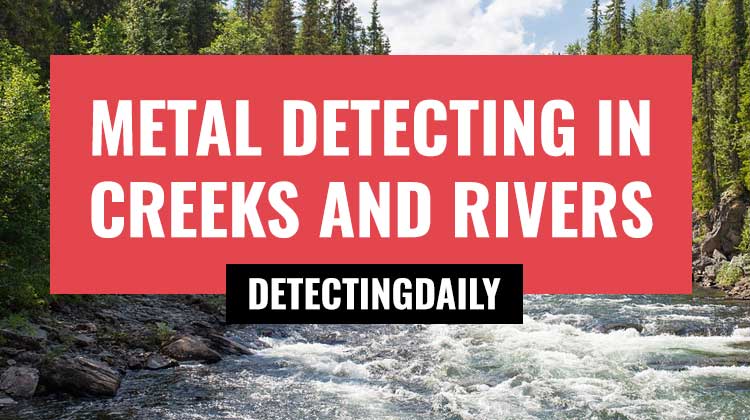
Rivers and creeks are abundant where I live, are easily accessible through many state parks that allow metal detecting, and of course they are great places to consider for treasure hunting.
If you’re thinking about heading out to your local waterway, I hope this guide on metal detecting in rivers and creeks will help you find some great treasures AND most importantly, stay safe!
Yes, Rivers are Unpredictable and Dangerous: Safety First!
I’m going to talk about metal detecting safety first, before I get into all the fun and joys of the different kinds of things you might be able to find and different techniques to scout out locations. Many injuries and deaths related to water recreation can be prevented.
My goal is NOT to scare you away from metal detecting along creeks and rivers, but simply to make sure you’re aware of different things. This can help you decide which types of natural freshwater locations are the right choice for you.
There are 4 very important things to know about metal detecting in or near rivers and creeks. Most of these I never really thought about until I was an adult and my husband, an avid swimmer, angler, and bridge-jumper-offer taught me over all of our years of being married.
#1. Water Moves Fast
It Does Not Matter How Good of a Swimmer You Think You Are. Wear a Life Jacket!
The most obvious risk with metal detecting near large, fast moving bodies of water of course is drowning. Even if you don’t venture into the water, it is very easy to accidentally slip or fall in along muddy or slippery river banks. Currents can be strong and move quickly.
My husband, who competed in and won state swimming championships his entire life and is practically a half-fish who would live in the water if he could, WEARS A LIFE JACKET when he goes anywhere along the rivers near our house.
The good news is life jackets don’t have to be the big, bulky uncomfortable things you might expect. Our whole family loves the BodyGlove Life jackets. We do a lot of kayaking, fishing, and swimming in unguarded areas and they are super comfortable and easy to move around in.
I understand it’s tempting to say, “Oh, I’m not going to get that close to the water…” – but it can happen, and if it does happen, it will happen quickly when you least expect it. Be prepared.
#2. Watch for Both Obvious and Hidden Hazards
Rivers and creeks tend to have uneven beds with different depths and sudden drops. You might be walking in what appears to be the very edge of the water that seems like it’s only an inch or two deep when it drops to 30 feet unexpectedly.
If you are along the edge of a major river, it’s also possible you will encounter boats. Don’t expect anyone to slow down. Even the coast guard will buzz right past you if you’ve ever tried to navigate small craft like a kayak or canoe in the river.
Barges are also extremely dangerous to be near, due to the possibility of becoming disoriented and trapped underneath. A barge is NEVER going to see you.
If there are boats, there are also very likely locks and dams. These too can be dangerous if you are unfamiliar with how they work. Always look out for buoys and other markers that alert you of these types of things. Don’t be tempted to walk along the edge of a dam or the top of a waterfall.
Many of the other hazards in rivers and creeks occur naturally, such as tree roots, tree branches, vines and slippery rocks. Oh, and snakes. Don’t forget the snakes. And maybe a small alligator or two.
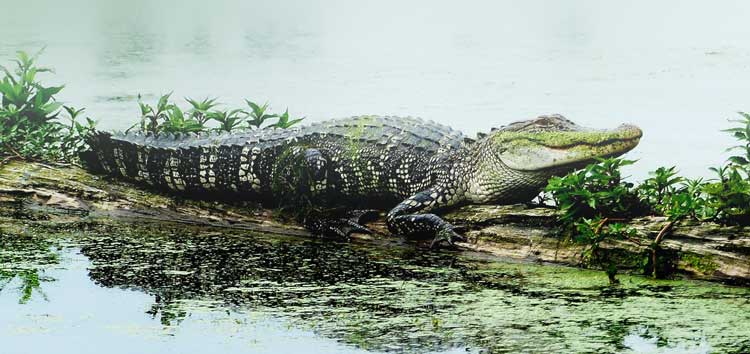
Where we live in the Northeast, we don’t get many alligators and any we do get typically are very small and found by the DCNR quick. Still, you will likely encounter bigger ones with a lot more frequency if you find yourself in remote marsh areas in Florida, Mississippi, Louisiana and Texas.
Other hazards can be unexpected objects such as sharp metal shrapnel, fishing line and hooks and or tires. Speaking of which…
#3. You Will Quickly Learn Just How Polluted Our Water Really Is
Most rivers are very polluted. Depending on where you are, you could encounter everything from sewage and trash to toxic levels of mercury and lead. Many rivers are near mining and industrial areas, which means often times heavy metals make their way into the water.
Also, be aware you may encounter from time to time just downright creepy things. Rivers are often a quick dumping ground for people on the run, not to mention water moves – so you might find something in the Mississippi that originated all the way from Canada.
And yes, all those heavy metals and ferrous metals will likely make your metal detector go haywire. Make sure you take some time to ground balance and adjust the settings of your machine so it only picks up the ones you want!
#4. The Digging Can Be Rough
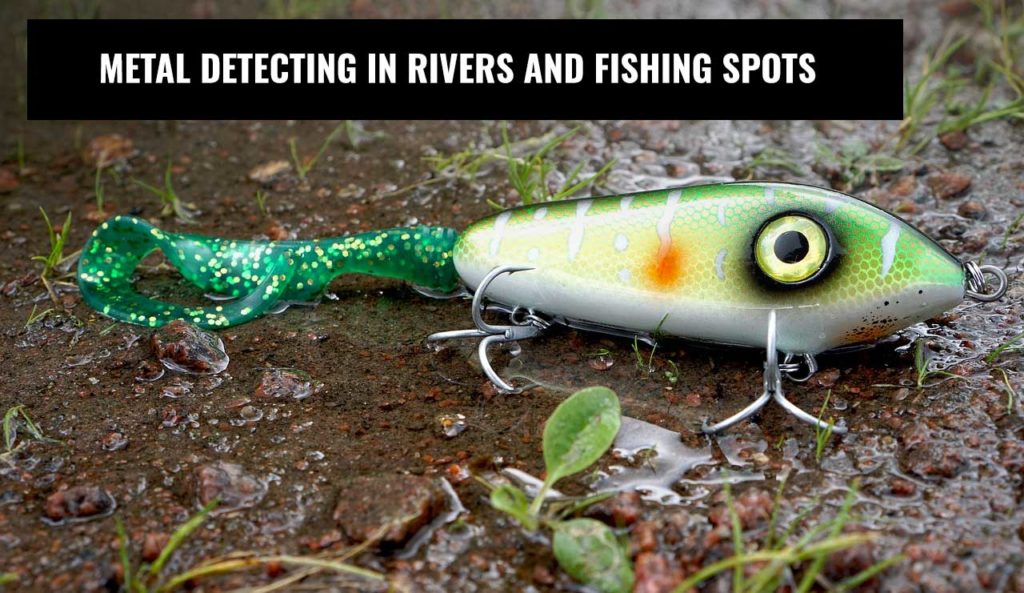
If you are metal detecting in a river, it’s highly likely you are going to encounter some issues with digging. For starters, a lot of state parks, even ones which allow metal detecting, are not going to let you bring a big shovel. Many do not allow you to bring in anything bigger than a screwdriver or an ice pick.
Some rivers are full of muck, others are full of rocks and gravel. And of course, there’s always that possibility you might dig up something you definitely don’t want to cut yourself on, like an old fishing lure, a rusty can or a nail.
Fortunately, there are a lot of metal detecting digging tools that can be helpful if you are able to use them.
Sand scoops can be helpful, but only if the area you are working in has sand or an otherwise loose surface. Many who metal detect successfully for rings and jewelry around swimming holes do so by moving very large rocks – which can be physically challenging all on its own.
The Good News: It’s Not All Doom
While this may all sound discouraging, don’t give up hope! With the right research and preparation, you’ll very likely be able to enjoy metal detecting on rivers and creeks with a lot of success.
Yes, there are hazards and challenges, but when you do your research, practice safety, and stay persistent you can have a successful hunt near and in rivers and creeks.
Now that we’ve properly alerted you of the dangers and hazards, let’s move on to the good stuff, like how to find the best spots and how to set yourself up for a successful hunt.
Here’s How to Successfully Metal Detect Along and in Rivers and Creeks
Let’s find some treasure, shall we?
Step One: Do Your Research to Scout Locations
There are many places you can go metal detecting along banks and rivers. Some places may not even require advance permission, such as rivers and creeks which run through public areas of state parks. BUT! That is not always the case – Always check!
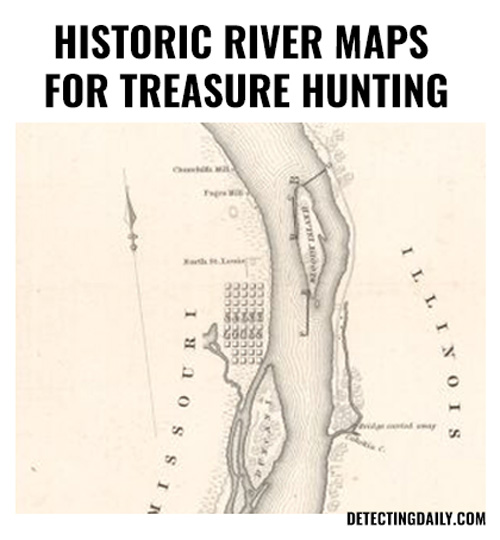
Looking at historical maps of different rivers can also be helpful. Many rivers change dramatically over a span of hundreds of years, and of course different types of industries change over time as well. You can often find historic topographic maps at your local library or county office.
If your hopes are to find precious metals such as silver, gold, jewelry or coins, you are going to need to go to places that attract the general public. Many areas have local swimming holes which people regularly frequent in the summer months.
You may also wish to consider places that are low or would make for crossing areas centuries ago by wagon or horse. These could be a place where you may be able to uncover some interesting historical relics.
Step 2: Make Sure You Have the Right Gear
If you are metal detecting along the bank or shore only, you do not necessarily need a waterproof metal detector. However, if you do plan to go underwater, you of course should check to make sure you have the right type of metal detector.
Are you hoping to find gold? Gold prospecting metal detectors will be better suited to help you find nuggets or even flakes while searching areas for possible natural gold deposits.
A waterproof pinpointer is a very good idea, especially since some areas may be difficult to target specific places to dig. The Garrett Pro-Pointer is of course a very popular option to consider.
Step 3: Understand the Physics of Metal in Water
Once you have a spot scouted out, permission to hunt there, and the right tools, there are some things you can do that will make it easier to start finding things.
The first thing to do is to take into consideration any naturally occurring metals that may be in the water and the dirt around the water. Some areas, especially in places where mining occurs, will likely have higher levels of iron ore in the soil.
Ground balancing your metal detector when you arrive on the site will help ensure you are only picking up targets. If your metal detector has other sensitivity settings, you may also need to adjust these.
If the area is frequented by people, it is likely that there will also be a fair share of trash along the edges or in the river. You might find a lot of bottle caps, aluminum can tabs, and other such things.
The next things to remember is how a metal item behaves in water. The majority of most precious metal objects generally do NOT float. This means when someone drops something in the water or near the shore, it is going to stay pretty much exactly where it would naturally sink in its path.
Of course, over time anything that is dropped and not recovered is very likely going to be covered up with silt and sediment deposits.
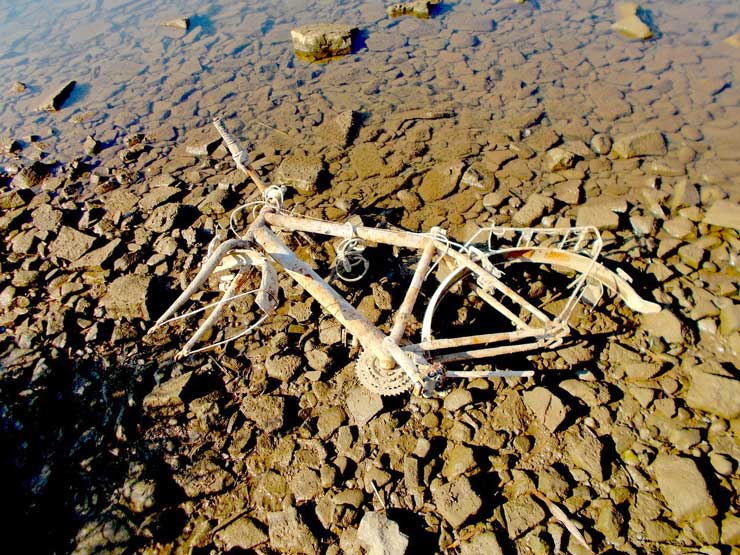
Step 4: Don’t Give Up!
You should expect your first few tries detecting in rivers and creeks to be largely unsuccessful. You may go out and not find anything, or you might spend so much time digging up junk targets that the good ones are never found.
Still, this is no reason to give up. After all, after you dig enough junk targets, eventually the good ones will be all that remain and they will be a lot easier to find.
Metal detecting along creeks and rivers can be a lot of fun, and you can find some interesting things if you practice regularly. Stay safe and keep digging!
Do you have any tips for metal detecting in rivers you would like to share? Tell us about your experiences in the comments below, and of course we would also love to hear of any interesting finds you might have recovered along the rivers or creek beds where you detect.
